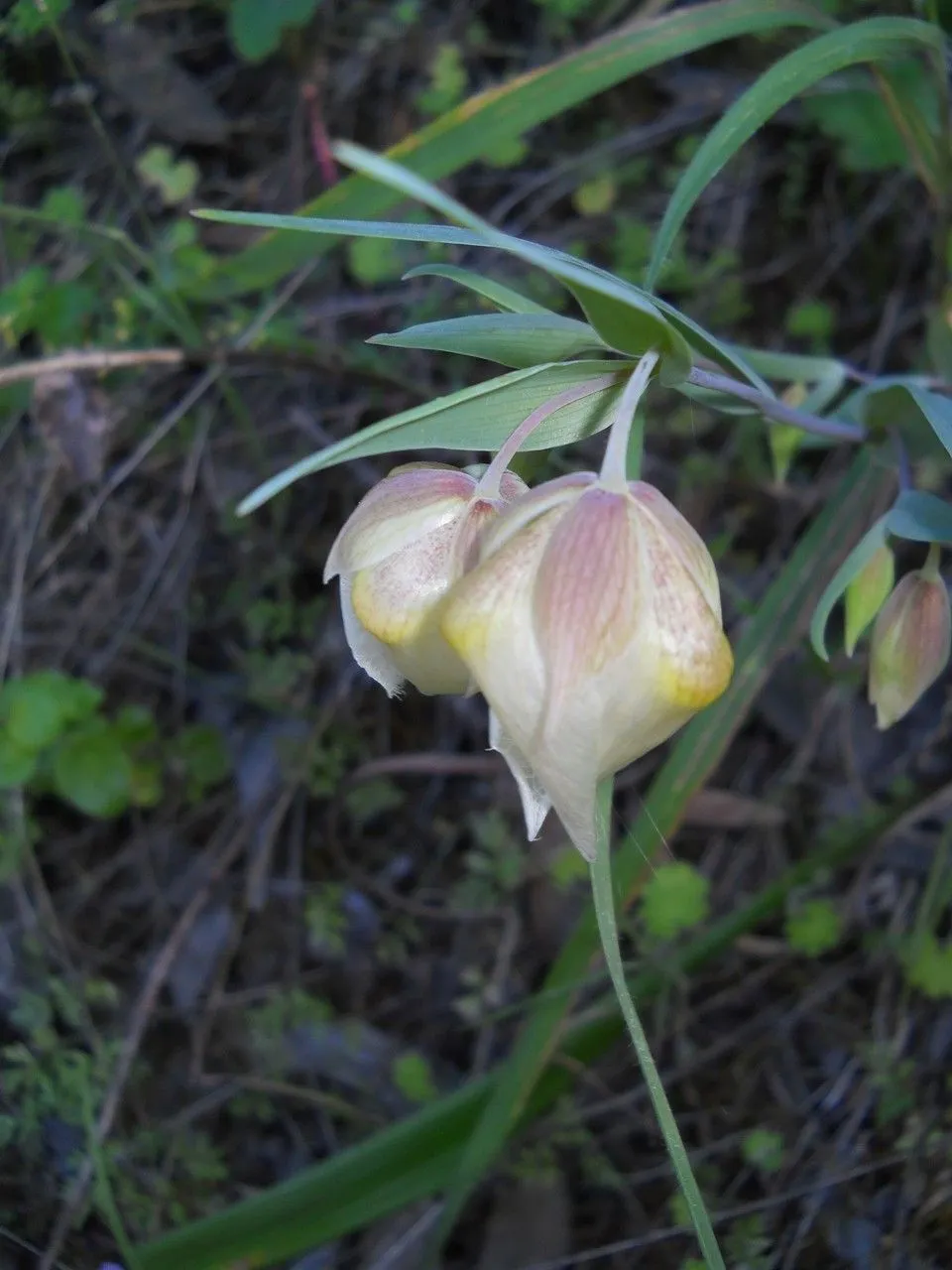
Author: (Benth.) Douglas ex Benth.
Bibliography: Botanist 2: t. 98 (1838)
Year: 1838
Status: accepted
Rank: species
Genus: Calochortus
Vegetable: False
Observations: California to Mexico (N. Baja California)
Fairy-lantern, scientifically known as Calochortus albus, is a delicate and enchanting member of the Liliaceae family. This perennial plant graces its natural habitat with its charmingly gentle appearance, resembling hanging lanterns, which is how it derived its common name.
Fairy-lanterns are native to the western regions of North America, stretching from California down through to northern Baja California in Mexico. This geographical range allows them to thrive in a variety of environments, from coastal scrublands to foothill woodlands. They are particularly well-adapted to the Mediterranean climate, with its wet winters and dry summers, which is typical of the Californian landscape.
The plant showcases a graceful display of pendulous, bell-shaped flowers that bloom predominantly in the spring. Each delicate blossom is an elegant white, sometimes with hints of pale pink, and tends to hang in clusters, creating a soft, ethereal effect. The petals are smooth and often have a silky texture that captures the light beautifully, giving them an almost luminescent quality in shaded understories.
Ecologically, Fairy-lanterns play a modest but crucial role, attracting a variety of pollinators, including bees and butterflies, which are drawn to their subtle fragrance and delicate appearance. These interactions support the proliferation of both the species and the broader ecological community where they reside.
Botanically described in 1838 by the esteemed botanists (Benth.) Douglas ex Benth., Calochortus albus remains a subject of fascination for botanists and plant enthusiasts alike. Its preservation continues to be important as it holds a unique niche in its native habitat, adding to the rich tapestry of North America’s flora.
Fairy-lantern exemplifies both the beauty and subtle complexity of native plant species, offering a living testament to the natural splendor found in the wilderness areas of California and northern Baja California. Its delicate charm and botanical significance make it a treasured subject for continued study and conservation efforts.
Eng: fairy-lantern, white fairy-lantern, white globe-lily
En: Fairy-lantern, White globe-lily, White fairy-lantern, White globelily
De: Weiße Mormonentulpe
© copyright of the Board of Trustees of the Royal Botanic Gardens, Kew.
© copyright of the Board of Trustees of the Royal Botanic Gardens, Kew.
© copyright of the Board of Trustees of the Royal Botanic Gardens, Kew.
Taken Oct 19, 2015 by EOL − kevinhintsa (cc-by-nc)
Taken Apr 10, 2016 by EOL − Donna Pomeroy (cc-by-nc)
Taken Apr 6, 2016 by EOL − Donna Pomeroy (cc-by-nc)
Taken Jan 5, 2016 by EOL − Gerald and Buff Corsi (cc-by-nc-sa)
Taken Jan 5, 2016 by EOL − Gerald and Buff Corsi (cc-by-nc-sa)
Taken Apr 29, 2021 by Bradley Soares (cc-by-sa)
Taken May 12, 2020 by caitlin (cc-by-sa)
Taken May 12, 2020 by caitlin (cc-by-sa)
Growth habit>: Forb/herb
Family: Myrtaceae Author: (F.Muell.) K.D.Hill & L.A.S.Johnson Bibliography: Telopea 6: 402 (1995) Year: 1995 Status:…
Family: Rubiaceae Author: Pierre ex A.Froehner Bibliography: Notizbl. Bot. Gart. Berlin-Dahlem 1: 237 (1897) Year:…
Family: Sapindaceae Author: Koidz. Bibliography: J. Coll. Sci. Imp. Univ. Tokyo 32(1): 38 (1911) Year:…
Family: Asteraceae Author: A.Gray Bibliography: Pacif. Railr. Rep.: 107 (1857) Year: 1857 Status: accepted Rank:…
Family: Fabaceae Author: Medik. Bibliography: Vorles. Churpfälz. Phys.-Ökon. Ges. 2: 398 (1787) Year: 1787 Status:…
Family: Aspleniaceae Author: (Cav.) Alston Bibliography: Bull. Misc. Inform. Kew 1932: 309 (1932) Year: 1932…